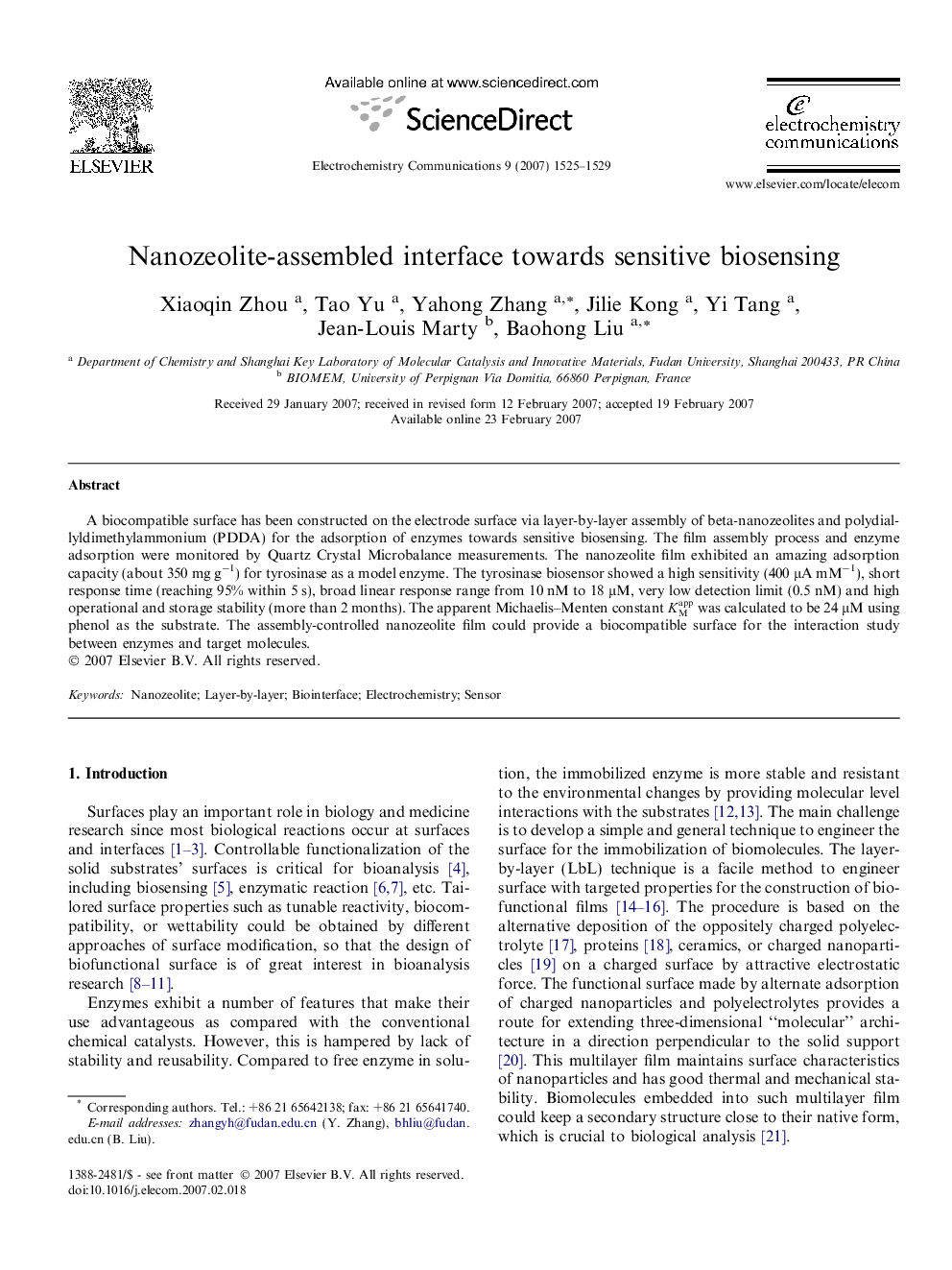| Article ID | Journal | Published Year | Pages | File Type |
|---|---|---|---|---|
| 182209 | Electrochemistry Communications | 2007 | 5 Pages |
A biocompatible surface has been constructed on the electrode surface via layer-by-layer assembly of beta-nanozeolites and polydiallyldimethylammonium (PDDA) for the adsorption of enzymes towards sensitive biosensing. The film assembly process and enzyme adsorption were monitored by Quartz Crystal Microbalance measurements. The nanozeolite film exhibited an amazing adsorption capacity (about 350 mg g−1) for tyrosinase as a model enzyme. The tyrosinase biosensor showed a high sensitivity (400 μA mM−1), short response time (reaching 95% within 5 s), broad linear response range from 10 nM to 18 μM, very low detection limit (0.5 nM) and high operational and storage stability (more than 2 months). The apparent Michaelis–Menten constant KMapp was calculated to be 24 μM using phenol as the substrate. The assembly-controlled nanozeolite film could provide a biocompatible surface for the interaction study between enzymes and target molecules.
